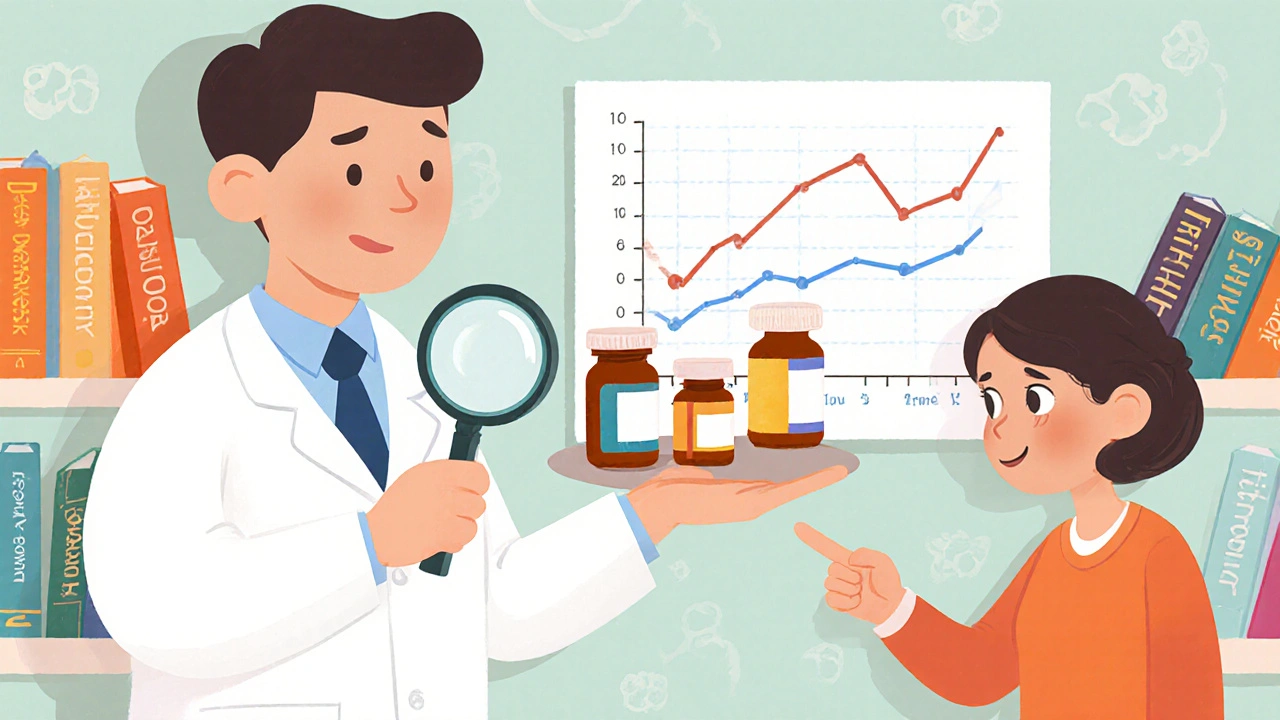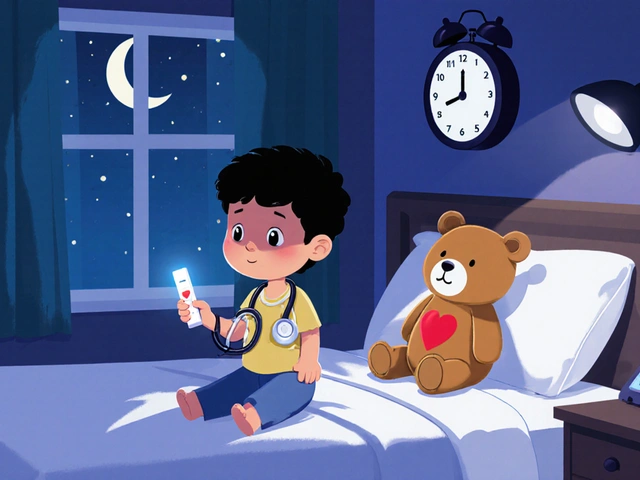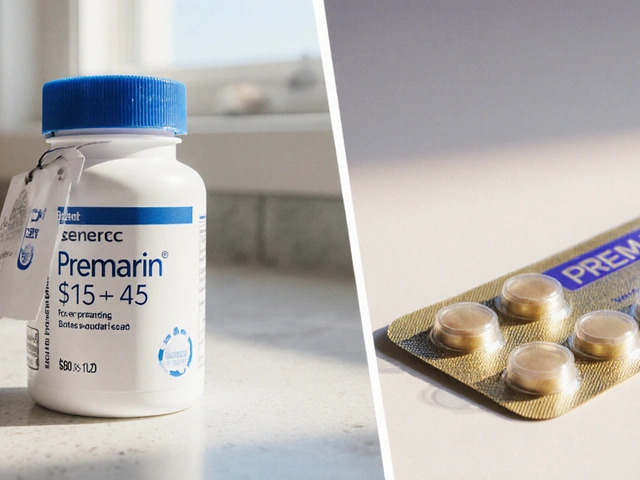Generics make up over 90% of prescriptions filled in the U.S. They save patients and the system billions every year. But not all generics are created equal. For pharmacists, spotting the ones that might be causing harm isn’t optional-it’s part of the job. You’ve seen it: a patient comes back saying their blood pressure won’t stabilize, their thyroid levels are off, or they’re having new side effects after switching to a cheaper version. These aren’t just complaints. They’re red flags.
When a Generic Isn’t Really the Same
The FDA says generics must be bioequivalent to brand-name drugs. That means their active ingredients match, and their absorption in the body falls within 80-125% of the original. Sounds tight, right? But that 45% range is wide enough to matter-especially for drugs where small changes can cause big problems. Think of it like this: if your insulin dose drops 20% because of a different generic, you could go into ketoacidosis. If your warfarin level spikes, you could bleed internally. These aren’t hypotheticals. They happen.High-Risk Drugs: The Ones That Need Extra Care
Some medications are just more sensitive to tiny differences. The FDA calls these narrow therapeutic index (NTI) drugs. There are 18 of them. And pharmacists need to treat each switch like a controlled experiment.- Levothyroxine: A 2021 study showed switching manufacturers caused TSH levels to jump from normal to dangerously high in 1 in 5 patients within six weeks.
- Warfarin: Even small changes in absorption can lead to clots or bleeding. One patient reported INR levels swinging from 2.8 to 6.1 after switching generics.
- Phenytoin: Used for seizures. A 10% drop in blood levels can trigger a seizure. A 10% rise can cause toxicity.
- Digoxin: The most dangerous of the NTI drugs. Adverse events are nearly three times higher with generic switches.
- Tacrolimus: For transplant patients. A 20% change in bioavailability can mean rejection or overdose.
These aren’t rare cases. The Institute for Safe Medication Practices tracked 1,247 pharmacists in 2022. Nearly 29% said they’d seen patient harm from a generic switch. And 63% had encountered at least one problematic generic in the past year.
Look-Alike, Sound-Alike Names: A Silent Killer
It’s not always about the chemistry. Sometimes, it’s about the label.Oxycodone/acetaminophen vs. hydrocodone/acetaminophen. One letter. One sound. One mistake. The FDA reports that 14.3% of all generic medication errors come from confusing similar names. And it’s not just prescriptions. The same thing happens with generic brand names on the shelf. A patient walks in asking for “Lortab” and gets “Norco” because the bottle looks the same. The pharmacist doesn’t catch it. The patient gets the wrong opioid. The outcome? Emergency room visit. Maybe even death.
That’s why checking the manufacturer name on the bottle isn’t just good practice-it’s a safety step. If you’ve ever seen a patient’s pill change color or shape without warning, that’s your cue to pause. Ask: “Did you switch manufacturers?”

Extended-Release Formulas: The Hidden Trap
Immediate-release pills are simple. They dissolve fast. But extended-release versions? They’re engineered to release the drug slowly over hours. And that’s where things get messy.In 2020, FDA testing found that 7.2% of generic extended-release opioids failed dissolution tests. That means the drug didn’t release properly-some came out all at once, others barely at all. One patient was prescribed a generic diltiazem CD for high blood pressure. After switching manufacturers, they had chest pain and dizziness. The FDA later confirmed the new version didn’t dissolve the way it should. Forty-seven cases like that were reported in just 14 months.
These aren’t defects you can see. They’re hidden in the tablet’s coating or granule structure. Only lab tests catch them. But you can catch the symptoms: unexplained side effects, loss of effectiveness, or sudden return of symptoms after a switch.
What Pharmacists Should Do: A Practical Checklist
You don’t need to be a chemist to spot trouble. You need to be observant.- Check the Orange Book. Look up the drug’s therapeutic equivalence code. If it’s “BX,” it’s not rated equivalent. Flag it. Don’t substitute without consulting the prescriber.
- Document the manufacturer. Write it on the script or in the system. If a patient has a problem later, you need to know which version they got.
- Ask about timing. If symptoms started within 2-4 weeks of a generic switch, link them. Especially with NTI drugs.
- Monitor lab values. For levothyroxine, warfarin, digoxin-track TSH, INR, serum levels. A 20% shift after a switch is a red flag.
- Report it. Use the FDA’s MedWatch system. Even if you’re not sure. One report might be ignored. Ten might trigger an investigation.
- Talk to the patient. Don’t assume they know the difference between generics. Say: “This version is made by a different company. Some people notice changes. Let me know if anything feels off.”

Why Patients Stay Silent (And How to Break Through)
Most patients don’t complain because they think the problem is them. “Maybe I’m not taking it right.” “Maybe I’m just getting worse.” “I can’t afford the brand.”But 22.4% of patients in a 2023 Consumer Reports survey said they noticed different side effects after switching generics. That’s over one in five. And 37.6% of patient complaints to the FDA were about inconsistent effectiveness.
Don’t wait for them to come to you. Ask. “Have you noticed any changes since we switched your medication?” That simple question opens the door. And when they say yes, don’t dismiss it. Document it. Investigate it.
The Bigger Picture: Why This Matters
Generics are essential. They make care affordable. But affordability shouldn’t come at the cost of safety. The FDA inspects over 2,000 manufacturing facilities a year. In 2022, they found 187 cases of data manipulation and 243 cases of poor quality control. Most were overseas. India and China account for nearly 90% of the facilities flagged.And it’s getting worse. In 2023, 47 of the 123 drug shortages in the U.S. were due to quality problems at generic factories. That’s almost 40%. These aren’t random glitches. They’re systemic.
As pharmacists, you’re the last line of defense. The prescriber writes the script. The insurer pushes the generic. The patient takes it. But you’re the one holding the bottle. You’re the one who sees the lab results. You’re the one who hears the patient say, “This doesn’t feel right.”
Don’t ignore that feeling. Flag it. Report it. Advocate for them. Because when a generic fails, it’s not just a medication error. It’s a broken promise.
What’s Changing? What You Need to Know
The FDA is stepping up. In 2023, they launched GDUFA III, a $1.14 billion plan to improve generic drug oversight. They’re hiring more inspectors. They’re testing more samples. And by 2024, they’ll start using AI to scan adverse event reports for patterns linked to specific manufacturers.But change moves slowly. Until then, the burden is on you. Know the high-risk drugs. Know the red flags. Know your patient’s history. And never assume a generic is harmless just because it’s cheap.
The science says generics work. But the real world? Sometimes, they don’t. Your job isn’t just to dispense. It’s to protect.
Can a generic drug really be less effective than the brand-name version?
Yes, in rare cases. While most generics perform the same, certain drugs-especially those with a narrow therapeutic index like levothyroxine, warfarin, and digoxin-can show measurable differences in how they’re absorbed. A 20% variation in bioavailability, which is legally allowed, can be enough to cause therapeutic failure or toxicity in sensitive patients. This isn’t about quality control failures-it’s about the limits of the current bioequivalence standard.
What should I do if a patient says their generic isn’t working?
First, don’t dismiss it. Ask when the switch happened and what symptoms changed. Check their lab values if applicable-TSH for thyroid meds, INR for warfarin. Look up the manufacturer in the FDA’s Orange Book. If it’s a known problematic batch or has a BX rating, contact the prescriber. Document everything. If the issue persists, file a report with the FDA’s MedWatch system. Patient reports are critical for catching patterns.
Are all generic manufacturers the same?
No. Two generics of the same drug can come from completely different factories with different processes. One might use a slower-dissolving coating, different fillers, or a different manufacturing method. The FDA doesn’t require them to be identical-just bioequivalent. That’s why tracking the manufacturer matters. If a patient has a bad reaction, knowing which company made the pill can help pinpoint the cause.
Why do some states restrict generic substitution for certain drugs?
States like Massachusetts, New York, Texas, and Virginia have special rules for narrow therapeutic index drugs because of documented cases of harm from switching. In those states, pharmacists can’t substitute a generic unless the prescriber allows it or the patient consents in writing. These rules exist because the data shows clear risks-especially for drugs like digoxin and tacrolimus where even small changes can be dangerous.
How often do pharmacists report problematic generics?
Reporting is still low. Only about 1 in 10 adverse events from generics are reported to the FDA. But in states that made reporting mandatory between 2020 and 2022, pharmacist-reported incidents jumped by 18.3%. The more pharmacists report, the faster the FDA can identify dangerous batches or manufacturers. Your report could prevent someone else’s harm.





8 Comments
Chuck Coffer
Oh wow, another pharmacist who thinks they’re the only one who’s noticed that generics sometimes don’t work the same. Groundbreaking. I’m sure the FDA’s $1.14 billion AI project is just waiting for your anecdotal horror stories to save us all.
Marjorie Antoniou
I’ve had patients cry in my pharmacy because they switched from one generic levothyroxine to another and suddenly couldn’t get out of bed. One woman lost her job because her TSH spiked. I document every manufacturer. I ask every time. I don’t care if it’s ‘just a pill’-if it changes how someone lives, it matters. Thank you for saying this out loud.
Andrew Baggley
Let’s not forget-this isn’t about fear. It’s about responsibility. You’re not just handing out pills; you’re holding someone’s health in your hands. And yeah, generics save money, but not if someone ends up in the ER because a tablet’s coating didn’t dissolve right. The system’s broken, but you? You’re the one who can still make it right. Keep speaking up. Keep documenting. Keep asking ‘Did you switch?’ That one question saves lives.
Frank Dahlmeyer
Look, I’ve been a pharmacist for 27 years, and I’ve seen everything-from patients who thought their generic was ‘too strong’ because it was a different shade of blue, to those who had seizures because a manufacturer changed the filler without telling anyone. The truth is, the FDA’s 80-125% window is a joke when you’re dealing with drugs that have a 2-point therapeutic window. I’ve personally flagged 14 different batches over the last five years. One manufacturer? Their digoxin tablets were so inconsistent, I started keeping a log of which pharmacy they came from. Now I refuse to dispense them unless the prescriber insists. And guess what? The patient didn’t have another episode for 11 months. That’s not luck. That’s vigilance. We need more pharmacists like this. We need mandatory manufacturer tracking. We need audits. We need accountability. And until then? Don’t just fill the script. Protect the person.
Codie Wagers
Let’s be clear: the problem isn’t generics. It’s the pathological reductionism of pharmaceutical capitalism. The FDA’s bioequivalence standard is a neoliberal fiction-a statistical mirage designed to appease shareholders while patients suffer the empirical consequences. The 45% variability window isn’t a scientific threshold; it’s a moral failure masquerading as regulation. And you? You’re the last cognitive barrier between systemic negligence and bodily collapse. Your checklist? It’s not protocol. It’s resistance. Documenting manufacturers? That’s not procedure-it’s epistemological defiance. Every time you ask, ‘Did you switch?’ you’re rejecting the commodification of human physiology. This isn’t about pharmacology. It’s about dignity. And if you’re not screaming into the void, you’re complicit.
Paige Lund
Wow. So we’re just supposed to turn every pharmacy into a clinical trial now? Cool. I’ll get right on that after I finish my 12-hour shift and my 3rd cup of coffee.
Reema Al-Zaheri
As a pharmacist in India who manufactures generic drugs, I can confirm: quality control varies wildly between factories. Some use USP-grade excipients; others use industrial-grade fillers. The FDA’s inspections are infrequent, and documentation is often falsified. I have seen batches where dissolution profiles differed by 35%-and these were exported to the U.S. The Orange Book is useless if manufacturers don’t update it. I urge U.S. pharmacists: request batch numbers. Track them. Cross-reference with FDA alerts. And if a patient reports a change, do not assume it’s psychosomatic. The science is real. The data is there. The system is failing. We must demand transparency-not just from the FDA, but from every manufacturer. Every pill has a story. Someone must listen.
Michael Salmon
Stop being dramatic. 99% of generics are fine. You’re just creating panic to feel important. Patients don’t care if their pill is blue instead of white. They care if it works. And guess what? It does. Your ‘red flags’ are just confirmation bias wrapped in a white coat. Next you’ll be telling us to test every pill with a spectrometer before dispensing. Get a grip.